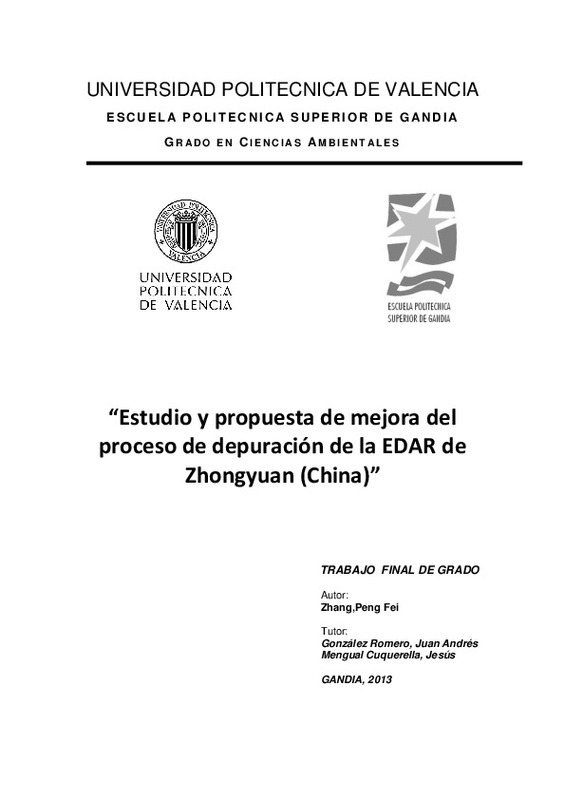JavaScript is disabled for your browser. Some features of this site may not work without it.
Buscar en RiuNet
Listar
Mi cuenta
Estadísticas
Ayuda RiuNet
Admin. UPV
Estudio y propuesta de mejora del proceso de depuración de la EDAR de Zhongyuan (China)
Mostrar el registro completo del ítem
Zhang, P. (2013). Estudio y propuesta de mejora del proceso de depuración de la EDAR de Zhongyuan (China). Universitat Politècnica de València. http://hdl.handle.net/10251/33704
Por favor, use este identificador para citar o enlazar este ítem: http://hdl.handle.net/10251/33704
Ficheros en el ítem
Metadatos del ítem
| Título: | Estudio y propuesta de mejora del proceso de depuración de la EDAR de Zhongyuan (China) | |||
| Autor: | Zhang, Pengfei | |||
| Director(es): | ||||
| Entidad UPV: |
|
|||
| Fecha acto/lectura: |
|
|||
| Resumen: |
In this project we propose to apply a chemically enhanced primary treatment (CEPT) in the oldest process line of the WWTP in the zone Zhongyuan for improving its operation. Thus, it seeks to ensure that the effluent reaches ...[+]
En este trabajo se propone aplicar un tratamiento primario mejorado químicamente (CEPT) para mejorar el funcionamiento de la EDAR de Zhongyuan, en sustitución de su línea de proceso más antigua. De este modo, se pretende ...[+]
|
|||
| Palabras clave: |
|
|||
| Derechos de uso: | Reconocimiento - No comercial - Sin obra derivada (by-nc-nd) | |||
| Editorial: |
|
|||
| Titulación: |
|
|||
| Tipo: |
|
recommendations
Este ítem aparece en la(s) siguiente(s) colección(ones)
-
EPSG - Trabajos académicos [5004]
Escuela Politécnica Superior de Gandia







